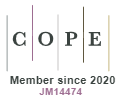The contribution of the Dual-Track agile methodology in digital products management
DOI:
https://doi.org/10.5585/gep.v13i1.21521Keywords:
Agile methodologies, Digital products, Dual-Track methodology, Software managementAbstract
Software organizations that develop digital products already use, most of the time, agile methodologies in the management of their projects. However, most of them do not, in practice, extend their principles to other stages of the project, applying them more in the development phase and not so much in the planning and design phase of the project. The present study aims to enhance knowledge about the Dual-Track methodology and empirically showcase how it can contribute in overcoming these limitations in digital products management. A qualitative study case approach was carried out with an exploratory focus to achieve the proposed objectives. Data collection was divided into three stages: a questionnaire application, with open and closed questions; semi-structured interviews; and participant observation. The results analysis indicates that the continuous and concurrent execution of agile cycles, both in the development and in the planning stages, as proposed by Dual-Track, can contribute to overcome deficiencies found in other agile management methodologies in the digital products area. Thereby, it is possible to conclude that the Dual-Track agile methodology can help increase the flexibility of organizations in correcting problems and adjusting the strategy, objectives, and scope of the project. The relevance of this study lies in the analysis and proposition of adjustments to the most used agile methodologies, especially concerning planning, which can be decisive to determine if a digital product will achieve success or not.
References
Aitken, A., & Ilango, V. (2013). A comparative analysis of traditional software engineering and agile software development. 2013 46th Hawaii International Conference on System Sciences (pp. 4751-4760). IEEE. https://doi.org/10.1109/HICSS.2013.31
Alexandros, N. K., Sakas, D. P., Vlachos, D. S., & Dimitrios, N. K. (2017). Comparing scrum and XP agile methodologies using dynamic simulation modeling. Strategic Innovative Marketing (pp. 391-397). Springer, Cham. https://doi.org/10.1007/978-3-319-56288-9_52
Amaral, D. C., Conforto, E. C., Benassi, J. L. G., & Araujo, C. D. (2011). Gerenciamento ágil de projetos: aplicação em produtos inovadores. São Paulo: Saraiva, 240.
Beck, K., Beedle, M., Van Bennekum, A., Cockburn, A., Cunningham, W., Fowler, M., ... & Thomas, D. (2001). Manifesto for agile software development. http://agilemanifesto.org/
Bughin, J., Catlin, T., Hirt, M., & Willmott, P. (2018). Why digital strategies fail. McKinsey Quarterly, 1, 61-75. https://www.mckinsey.com/business-functions/mckinsey-digital/our-insights/why-digital-strategies-fail
Cagan, M. (2017). Inspired: How to create tech products customers love. John Wiley & Sons.
Cagan, M. (2019). Dual-track agile. Silicon Valley Product Group. https://svpg.com/dual-track-agile
Cockburn, A. (2004). Crystal clear: A human-powered methodology for small teams: A human-powered methodology for small teams. Pearson Education.
Conforto, E. C. (2009). Gerenciamento ágil de projetos: proposta e avaliação de método para gestão de escopo e tempo (Doctoral dissertation, Universidade de São Paulo).
Cooper, A., Reimann, R., Cronin, D., & Noessel, C. (2014). About face: the essentials of interaction design. John Wiley & Sons.
Cooper, R. G. (2019). The drivers of success in new-product development. Industrial Marketing Management, 76, 36-47. https://doi.org/10.1016/j.indmarman.2018.07.005
da Silveira, T. B. J., & da Cunha Lemos, D. (2021). Colaboração com clientes e inovação aberta no desenvolvimento ágil de software: uma revisão sistemática de literatura. Revista de Gestão e Projetos, 12(1), 39-69. https://doi.org/10.5585/gep.v12i1.18645
Doolittle, J. (2020). Jeremy Miller on Waterfall Versus Agile. IEEE Software, 37(4), 107-C3. https://doi.org/10.1109/MS.2020.2987493
Gaborov, M., Karuović, D., Kavalic, M., Radosav, D., Milosavljev, D., Stanisaljev, S., & Bushati, J. (2021). Comparative analysis of agile and traditional methodologies in IT project management. Journal of Applied Technical and Educational Sciences, 11(4), 1-ArtNo. https://doi.org/10.24368/jates.v11i4.279
Luenendonk, M. (2019). Introduction to dual-track agile product development for digital startups. https://www.cleverism.com/introduction-to-dual-track-agile-product-development-for-digital-startups/
Miguel, P. A. C. (2007). Estudo de caso na engenharia de produção: estruturação e recomendações para sua condução. Production, 17, 216-229. https://doi.org/10.1590/S0103-65132007000100015
Miller, L. (2005, July). Case study of customer input for a successful product. In Agile Development Conference (ADC'05) (pp. 225-234). IEEE. https://doi.org/10.1109/ADC.2005.16
Minayo, M. C. D. S. (2000). O desafio do conhecimento-pesquisa qualitativa em saúde. In O desafio do conhecimento-pesquisa qualitativa em saúde (pp. 269-269). https://doi.org/10.1590/S1413-81232007000400030
Patton, J. (2017). Dual track development is not duel track. Dual Track.: https://www.jpattonassociates.com/dual-track-development/
Péraire, C. (2019, May). Dual-track agile in software engineering education. In 2019 IEEE/ACM 41st International Conference on Software Engineering: Software Engineering Education and Training (ICSE-SEET) (pp. 38-49). IEEE. https://doi.org/10.1109/ICSE-SEET.2019.00013
Serrador, P., & Pinto, J. K. (2015). Does Agile work? — A quantitative analysis of agile project success. International Journal of Project Management, 33(5), 1040-1051. https://doi.org/10.1016/j.ijproman.2015.01.006
Shim, W., & Lee, S. W. (2019). An agile approach for managing requirements change to improve learning and adaptability. Journal of Industrial Information Integration, 14, 16-23. https://doi.org/10.1109/REW.2017.46
Stoica, M., Mircea, M., & Ghilic-Micu, B. (2013). Software development: Agile vs. traditional. Informatica Economica, 17(4). https://doi.org/10.12948/issn14531305/17.4.2013.06
Sy, D. (2007). Adapting usability investigations for agile user-centered design. Journal of usability Studies, 2(3), 112-132. https://uxpajournal.org/adapting-usability-investigations-for-agile-user-centered-design/
Versionone CollabNet (2020). 14th annual state of agile report. https://stateofagile.com/#.
Williams, L., & Cockburn, A. (2003). Guest Editors' Introduction: Agile Software Development: It? s about Feedback and Change. Computer, 36(06), 39-43. https://doi.org/10.1109/MC.2003.1204373
Yin, R. K. (2015). Estudo de Caso: Planejamento e métodos. Bookman editora.
Downloads
Published
How to Cite
Issue
Section
License
Copyright (c) 2022 Revista de Gestão e Projetos

This work is licensed under a Creative Commons Attribution-NonCommercial-ShareAlike 4.0 International License.
- Abstract 1146
- PDF (Português (Brasil)) 819







